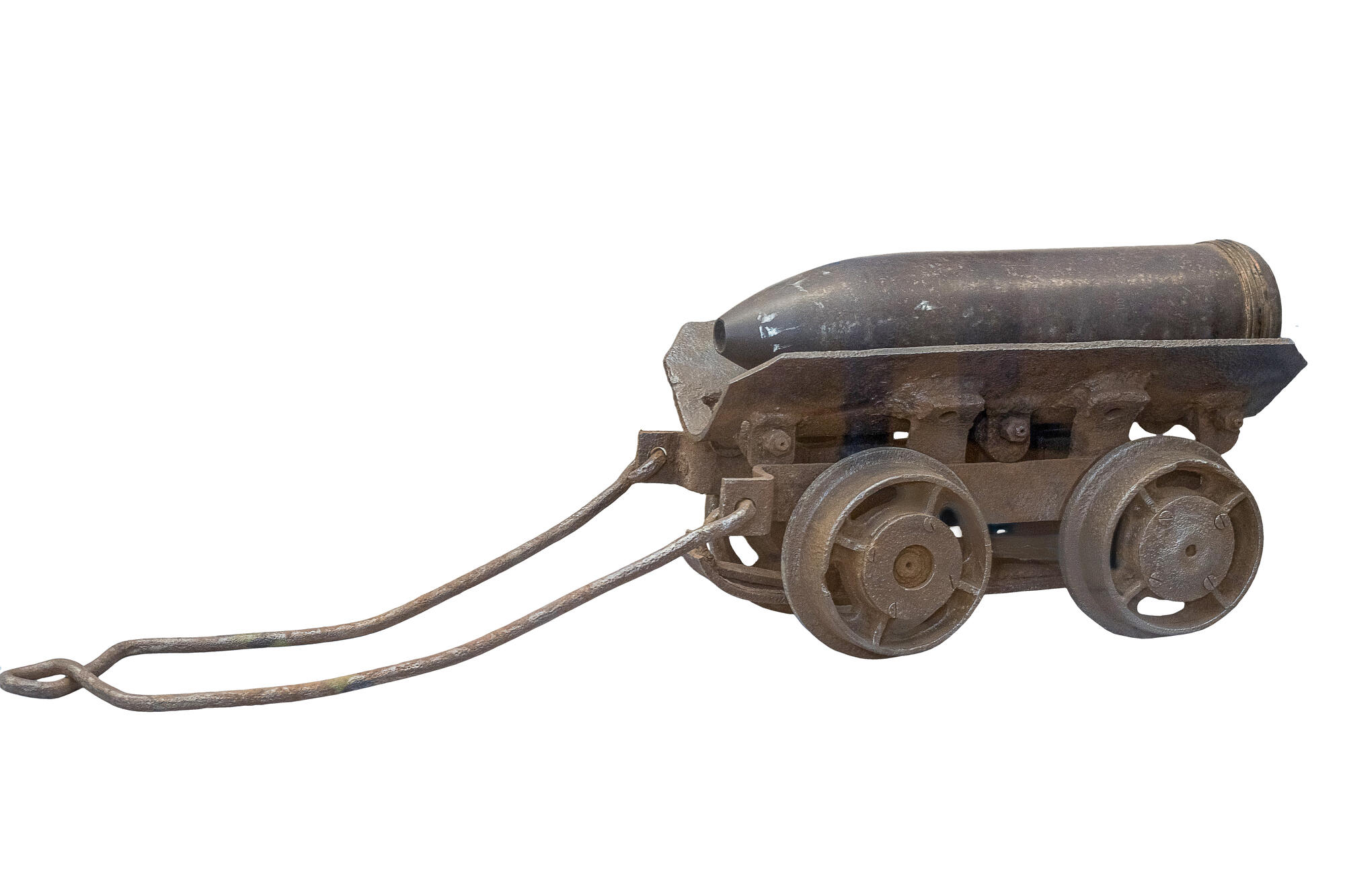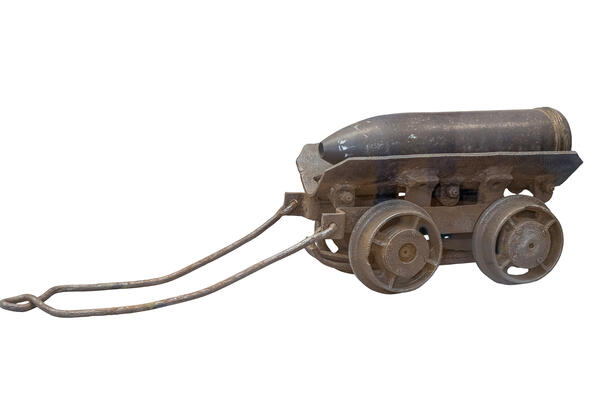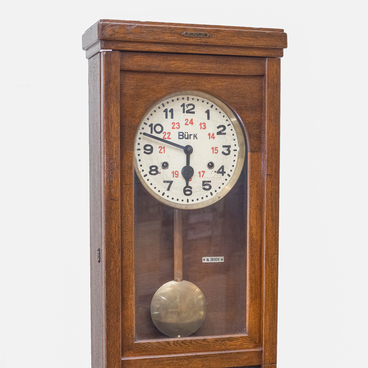The wagon for transporting shells was discovered by worker Mikhail Titov on February 12, 1960, during the excavation work in the forge shop of the Onega Tractor Plant. The find was immediately donated to the museum.
The wagon turned out to be two-axle, with four single flange wheels (the wheels with an elevated edge on one side, modern railway wagons have the same ones). The device is equipped with steel plates for shock absorption and a box-shaped body in which three cross rollers are installed to load and slide shells. A handle for pushing is attached to the front part. This wagon was made at the Alexandrovsky Shell Factory at the beginning of the 20th century. It was also used there. Heated blanks and cannons were transported on such wagons, most likely from a foundry to the drilling shop, and then to warehouses.
In 1788, Scottish engineer Charles Gascoigne, who was at the head of the Alexandrovsky Shell Factory, created and implemented the first Russian factory railway between the drilling and foundry shops. It was called the “cast-iron wheel-line”. Later, such wheel-lines were created inside and between other workshops of the factory.
Charles Gascoigne also brought an air blowing system to Petrozavodsk. The Lososinka River accelerated the wheel, oxygen entered the blast furnace through the air pipeline, the temperature increased and harmful impurities were burned off (sulfur and phosphorus, which could make cannons split when firing). In Charles Gascoigne’s time, cannons were cast as a whole, and the barrels were drilled in them later. That method increased the accuracy, as well as the range of fire.
At the Alexandrovsky Shell Factory, the first Russian steam engine was produced for pumping water at the Voitsky mine. Charles Gascoigne tried to reduce the cost of production by replacing black coal, which was ordered from England, by local firewood. However, the production of melting furnaces that used firewood turned out to be lower, and the innovation had to be abandoned.
Charles Gascoigne’s wheel-line stopped being relevant only at the beginning of the 20th century, when special overhead cranes appeared at the factory, with the help of which cannons were transported. After that, the floors were covered with cast-iron plates, and the rails were dismantled.
The wagon turned out to be two-axle, with four single flange wheels (the wheels with an elevated edge on one side, modern railway wagons have the same ones). The device is equipped with steel plates for shock absorption and a box-shaped body in which three cross rollers are installed to load and slide shells. A handle for pushing is attached to the front part. This wagon was made at the Alexandrovsky Shell Factory at the beginning of the 20th century. It was also used there. Heated blanks and cannons were transported on such wagons, most likely from a foundry to the drilling shop, and then to warehouses.
In 1788, Scottish engineer Charles Gascoigne, who was at the head of the Alexandrovsky Shell Factory, created and implemented the first Russian factory railway between the drilling and foundry shops. It was called the “cast-iron wheel-line”. Later, such wheel-lines were created inside and between other workshops of the factory.
Charles Gascoigne also brought an air blowing system to Petrozavodsk. The Lososinka River accelerated the wheel, oxygen entered the blast furnace through the air pipeline, the temperature increased and harmful impurities were burned off (sulfur and phosphorus, which could make cannons split when firing). In Charles Gascoigne’s time, cannons were cast as a whole, and the barrels were drilled in them later. That method increased the accuracy, as well as the range of fire.
At the Alexandrovsky Shell Factory, the first Russian steam engine was produced for pumping water at the Voitsky mine. Charles Gascoigne tried to reduce the cost of production by replacing black coal, which was ordered from England, by local firewood. However, the production of melting furnaces that used firewood turned out to be lower, and the innovation had to be abandoned.
Charles Gascoigne’s wheel-line stopped being relevant only at the beginning of the 20th century, when special overhead cranes appeared at the factory, with the help of which cannons were transported. After that, the floors were covered with cast-iron plates, and the rails were dismantled.



